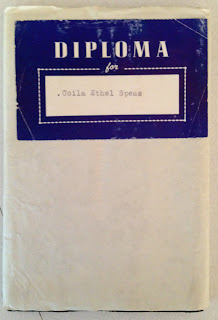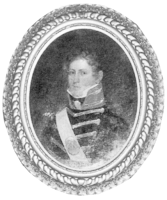The concept of plural marriage is beyond my understanding. The purpose of this post is not to highlight the practice of polygamy, but rather to praise the saints for their willingness to obey, as demonstrated by their living this difficult principle, amid extreme hardship
and persecution. To do so I will share the inspiring example of Samuel Bateman,
the cousin of my Great, Great Grandfather
William Bateman.
 |
| Samuel and Marinda's Family |
Samuel was sealed to his first wife, Marinda Allen, November 17, 1854. Samuel was twenty-two years of age and Marinda was not quite sixteen. Together they had thirteen children, ten of whom lived to adulthood.
 |
| Samuel and Harriet's Family |
Sixteen years after his first wedding, on
February 27, 1871, Samuel was sealed to his second wife, Harriet Egbert. Samuel was thirty-eight years old and Harriet, a much younger sixteen-year old bride. Nine
children were born to this union, seven living to adulthood.
To provide for this very large family, Samuel worked in numerous professions, but primarily he was a devoted latter-day saint. His professions often overlapped with his religious assignments and callings as he assisted the
brethren in every way he was asked, including participating in the United Order
in West Jordan.
 |
| Pioneer Square Dance |
Some of his varied work included farming, Treasurer of the West Jordan
Cooperative Mercantile Institution, tax collector, and square dance caller, a
service he provided to public gatherings, as well as private dances for the Brigham Young family. Ironically, as you will learn from the remainder of this narrative, Samuel assisted the
Sheriff on numerous occasions in a posse searching for fugitives.
During times when Federal
Authorities were on the lookout for polygamist activity, he served as a
personal bodyguard to the Prophet John Taylor, and later to the
Prophet Wilford Woodruff as well as a number of the apostles. This service included delivering mail to and from the church members from the leaders' locations of exile or hiding, usually at night under cover of darkness.
In consequence of Samuel's obedience to the principle of plural marriage, he was also sought after by the U.S. Deputy
Marshals. As Samuel did not relish the thought of spending time behind prison bars for something that he did not believe a crime, merely living his religion the best he knew how, he tried to outwit the deputies and escape arrest. A number of raids on the Bateman home were reported in the
territorial newspapers. A report of one such raid appeared in a letter to the editor of the Deseret
News on July 7, 1886, written by his wife Marinda:
 |
| Marinda Allen Bateman |
“At about half past 3 o-clock on the morning of the 30th
of June, we were aroused from our peaceful slumbers by the tramping of horses’
feet, which halted in front of our home. The riders proved to be deputy
marshals. They alighted and one of them taking hold of the knob of the wire
door, shaking it, said: ‘let me in.’ By this time a lady – one of our family –
came to the door, and he repeated his demand.
"He then said: ‘I have a warrant for Samuel Bateman.’ After
getting inside he got down flat on the floor to look under the lounge, and then
got on it on his knees and felt all around the bed where three children were
asleep, and so he did with four other beds where there were children asleep in
each. He even looked into a trunk not three feet long and scarcely one foot and
a half wide; also a box where a little girl kept her clothes in, about two and
half feet long and one foot wide, and other small boxes, in every nook and
corner. As we had just had a grist brought home, he felt flour and bran sacks.
“This is the fourth time our house has been searched, but
never has anyone acted so low and unbecoming as this man, and as he had
searched the back rooms and cellar I returned to the front room and there stood
Deputy Franks outside the door. He said, ‘I guess you ladies are getting tired
of us disturbing you so often.’ We told him it was rather unpleasant to be
disturbed so early.
“I asked him the name of his companion. He said it was
Brooks. I said it was a new name. He replied, ‘yes,’ that he was a new
detective from the East. This Brooks came into the front room and commenced to
search again. Mr. Franks’ manner was quite gentlemanly and quite different to
that of the other man.
“Respectfully, Mrs. S. Bateman”
Samuel’s daughter described another occasion, during a
daytime inspection, when kind Deputy Franks entered the kitchen and looked in the
cupboard, opened a small sugar can, and peered into the flour bin. Her mother
said, “Deputy, have you no idea of the size of the man you are searching for?”
The deputy respectfully replied, “Mrs. Bateman, I do know
his size, and I know the character of the man also. I trust it will never fall
to my lot to arrest Mr. Bateman. I admire him. I must make a pretense of
searching or the fellows outside will bawl me out.”
At the request of his friend and leader, John Taylor, Samuel
kept a daily journal during his years in hiding (1886-1888). In this journal, he described this period as a
time of constant guard, secret communication networks, hidden chambers, and
private passageways. His journal is carefully worded, often with code phrases and with the names of
people, buildings, and places obscurely referred to as, “the place where we
were” or, “those we were with.”
To escape detection, his beard was often dyed and he went about in disguise so complete
that even very close friends did not recognize him.
Of this difficult period, his courageous wife Marinda always
upheld him. It is said that no bitter word against plural marriage ever passed her lips. I admire her simple faith, as shown in her words:
"I would suffer a hundred times more for the sake of that
principle because it was revealed by God. The principle is right, the failures
are due to human weakness.”
To save the family from abject poverty, Marinda determined to contribute to the family welfare and studied obstetrics, after which she left the children in the care of Samuel's second wife, Harriet, to work as a midwife.
In 1888, under the advice of Church authorities, Samuel gave
himself up to the federal officers. He served eight-five days in the
territorial penitentiary and paid a $75 fine. Part of that imprisonment was
shared with his friend George Q. Cannon. Although there is no known photograph of Samuel during his incarceration, this depiction of other polygamist captives helps one to visualize him there.
 |
| George Q. Cannon is seated in the doorway in this picture from the Utah State Penitentiary |
Shortly after his release from prison, on October 6, 1890, Samuel attended General Conference when the Manifesto was first presented to the general membership.
Aware in advance
of this proposed discontinuance of plural marriage, for which he had
suffered exile and imprisonment, Samuel decided to vote against the Manifesto when it was announced during the Conference. Considering the suffering he had endured for this principle, one would think that Samuel would have pleasantly anticipated its end. But instead, Samuel hesitated.
When the Manifesto was read to the saints for their sustaining vote, Samuel described what happened:
“Some power not
of my own raised my arm, and I voted to sustain President Woodruff in this
matter. As soon as I had done it, a sense of peace and contentment came over
me.”
His statement gives me great cause to admire the saints during this time period who were willing to follow and obey, regardless of personal consequences. Undoubtedly, the uncertainty of what would become of Harriet and their seven children must have weighed heavily upon his heart as he sustained his leaders.
With the release of the Manifesto, and relative peace restored between
the Church and the Federal Government, Samuel was able to spend the remainder of his years with his family, farming. He was permitted to raise both of his families. Samuel passed away in 1911.
Many years later, in 1936, Harriet, his widowed second wife, penned the following letter, at the age of eighty-two. I include her words here to remind me that obedience builds faith and brings happiness. Her life as a sixteen year bride, a second wife in a plural marriage, in a time of persecution and prosecution, by today's standards might cause doubt, but instead cemented her testimony of the restored gospel of Jesus Christ.
























































